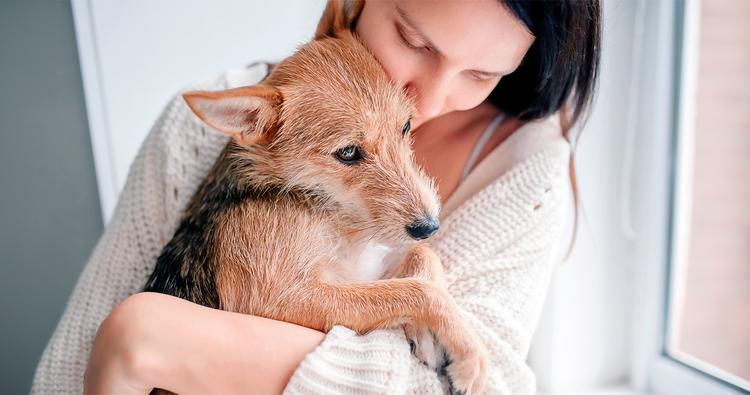by Adopt a Pet, | January 11, 2024

Irina Efremova / Stocksy
While some cats and dogs take to each other right way, it will usually take a few weeks to a few months for a cat to get used to a dog. Of course, the personalities of both pets have a large impact on how long it will take. Remember, you’re not necessarily looking for the pets to become BFFs. If your cat is happy to ignore your dog while being in the same room, that could be considered a success.
Tips for springing a dog on your cat
If your cat hasn’t had a dog around in a while — or at all — there are some things to keep in mind when bringing a dog into the house:
Make sure your cat has a safe space. One way to accomplish this is to put a small pet door in a room that your cat can fit through but the dog cannot.
Make sure the dog does not have access to your cat’s litter box. Not only do some dogs eat from the litter box, but if they startle the cat while they’re using the box, the cat may become afraid to use it.
Also, don’t allow the dog to have access to the cat’s food bowl. Cats do not usually appreciate sharing. Place the bowl up on a high surface and give the cat easy access via a cat tree or strategically placed furniture.
Proper introductions
You can’t just bring a dog into the house and leave them alone with the cat. Instead, slow introductions are recommended.
Make sure that both pets are ready to be introduced. This entails your dog being well-trained with cues and your kitty being fully litter box-trained and not nervous in their new environment. Additionally, you should set up an isolation room for your kitty where your dog is not allowed to enter.
Feed your dog and your cat on opposite sides of the door. They will begin to associate each other’s smell with something exciting—eating! If your dog begins pawing or barking at the door, give a firm “No!” command and move the bowls farther away from the door. You can slowly move the bowls closer to the door each day until both pets are eating calmly. From there, you can expose them to each other’s scents more strongly by rubbing each of them with a towel and then placing the towel next to the opposite pet’s food bowl.
Train your cat by having them spend short periods of time in their crate each day. You can lure them in with a treat trail. This is an important step to complete before moving on to step four.
Put your cat in their crate and your dog on their leash. Bring your dog into the room the cat crate is in and have them practice commands with you for about five minutes. If your dog ignores your commands because they are too interested in the kitty, give them a firm “No!”, walk them outside of the room, practice some commands, and then try entering the room again. Slowly increase the amount of time spent in the room together.
Next, put your pup on their leash and have them do a down-stay on the far side of the room while you have a helper open the cat’s crate. If your cat won’t come out of the crate, leave the room with your dog until your cat comes out of the crate and then attempt to re-enter with your dog. It is crucial to keep your dog in a down-stay so he doesn’t intimidate your cat. Gradually increase the amount of time spent in the room together.
When your cat and leashed dog can be relaxed in the same room, drop your dog’s leash.
If the introductions aren’t going well and if the dog seems aggressive, or if the cat seems particularly nervous, seek the advice of a professional trainer. The sooner you do this, the better so as to prevent bad behavior from becoming a habit.
Happily, most cats and dogs will learn to get along just fine and many do become friends and playmates.

Adopt a Pet
Related articles

Rehome
What Does it Mean to Rehome a Dog?

Rehome
Do You Have To Pay To Rehome A Dog?

Behavior & Training
Why Do Dogs Tear Up Stuff When You Leave?

Behavior & Training
How Can You Tell If Your Cat is Stressed?

Behavior & Training
How Do You Discipline A Cat With Bad Behavior?

Behavior & Training
What Can I Give My Cat For Stress?

Behavior & Training
How Do You Eliminate Cat Chewing?

Behavior & Training
Why Is My Cat Suddenly Chewing On Everything?
Your cat may be suddenly chewing on everything due to anxiety, a medical condition, or even just because they realized it’s an activity they enjoy.

Behavior & Training
Why Is My New Cat Hiding?
Is your cat hiding? Don’t worry, it’s totally normal. Here’s how to help them adjust.

Behavior & Training
How Can I Stop My Dogs From Fighting?

Behavior & Training
How Do I Stop My Indoor Cat From Escaping?

Behavior & Training